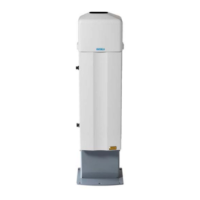Chapter 4 ______________________________________________________ Functional Description
VAISALA_______________________________________________________________________ 45
Return Signal Strength
In general form, the instantaneous return signal power can be derived
from the Lidar equation:
z
zdz
ez
z
Ac
Eoz
0
)(2
2
r
)(
2
)(P
where
P
r
(z) = Instantaneous power received from distance z
E
O
= Effective pulse energy (taking all optics attenuation into
account) [Ws]
c = Speed of light [m/s]
A = Receiver aperture [m
2
]
z = Distance [m]
ß(z) = Volume backscatter coefficient at distance z [m
-1
srad
-1
,
srad = steradian]
e
zdz
z
2
0
()
= Two-way atmospheric transmittance, accounts for the
attenuation of transmitted and backscattered power. The
transmittance equals 1 in clear atmosphere, that is, with no
attenuation.
Height Normalization
Assuming a clear atmosphere, the power of the return signal (P
r
) is
inversely proportional to the square of the distance, that is, the signal
strength from 1 000 ft is generally hundred times stronger than from
l0 000 ft.
The height dependence is eliminated by multiplying the measured signal
value with the square of height (height normalization). Noise, however,
being height-independent from a measurement point of view, will then be
correspondingly accentuated with increasing height.

